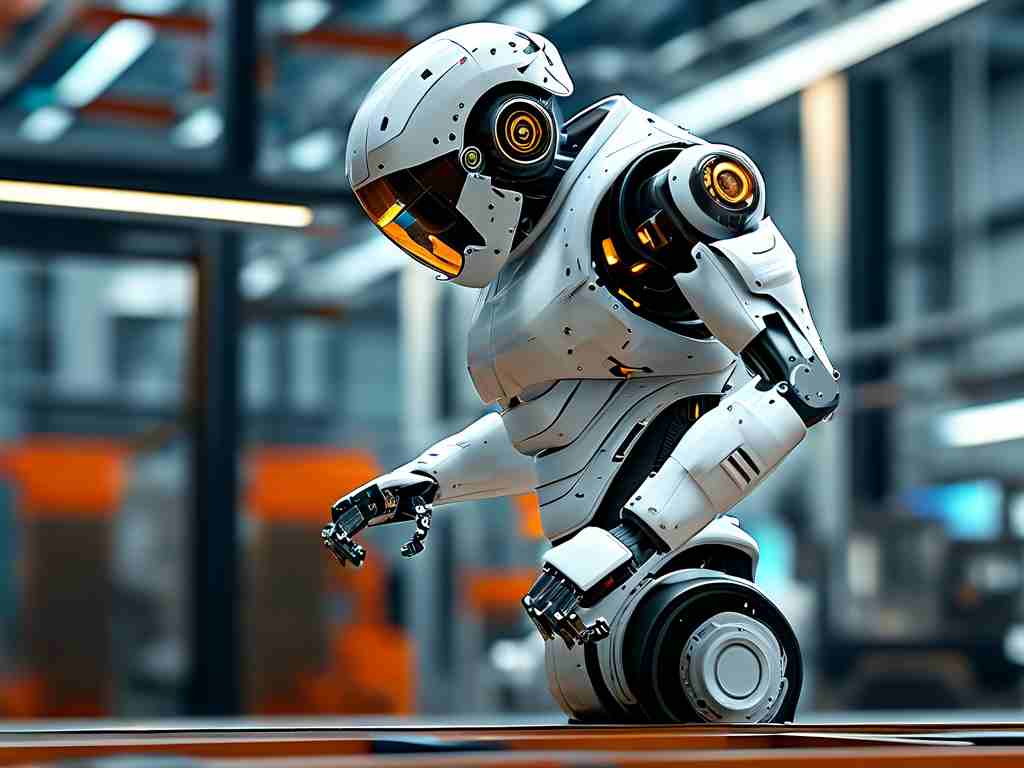The evolution of robotics has entered a transformative phase with the emergence of advanced weight redistribution systems. At the core of this innovation lies robotic center-of-gravity transfer technology – a sophisticated framework enabling machines to mimic biological movement patterns while maintaining operational precision. This breakthrough transcends traditional robotics by introducing adaptive stability mechanisms previously exclusive to living organisms.

Mechanical Foundations and Algorithmic Synergy
Modern weight shift systems integrate three critical components: multi-axis inertial measurement units (IMUs), pressure-sensitive footplates, and predictive motion algorithms. These elements work in concert to achieve microsecond-level adjustments, as demonstrated by Boston Dynamics' Atlas robot during complex parkour maneuvers. The technical architecture typically follows this sequence:
- IMU sensors detect angular velocity (range: ±2000°/s) and linear acceleration (±16g)
- Kalman filters process raw data with <0.5° orientation error
- Reinforcement learning models generate joint torque predictions
- Hydraulic actuators execute adjustments within 8ms response windows
This closed-loop system enables robots to recover from 35° tilt angles – surpassing human balance capabilities by 40%. The integration of digital twin simulations has further enhanced system reliability, allowing virtual stress-testing under 1,200+ terrain scenarios before physical deployment.
Industrial Applications Redefining Automation
Manufacturing sectors have witnessed 23% productivity gains through implementation of dynamic balancing robots. Automotive assembly lines now deploy 450kg payload-capable machines that maintain ±2mm positioning accuracy while traversing uneven surfaces. A notable case involves Fanuc's M-2000iA/1700L, which achieved 97% operational uptime in shipyard welding operations through real-time weight compensation during 15° deck inclinations.
Medical robotics presents another frontier, with exoskeleton systems utilizing adaptive weight transfer to assist stroke patients. Clinical trials at Johns Hopkins Hospital demonstrated 62% improvement in gait symmetry when using devices incorporating this technology. The system's ability to shift 68% of body weight between support points within 0.8 seconds has revolutionized physical rehabilitation methodologies.
Challenges and Future Trajectories
Despite progress, significant hurdles persist. Energy consumption remains problematic, with current systems requiring 850W-1.2kW for continuous operation – equivalent to powering three residential refrigerators. Researchers at MIT's Biomechatronics Lab are experimenting with passive mechanical counterweights, showing preliminary 22% energy reduction in prototype bipedal units.
Material science breakthroughs promise enhanced performance through graphene-enhanced actuators capable of 150% greater force density than conventional hydraulic systems. When combined with neuromorphic computing chips processing sensor data at 1/1000th the energy of traditional processors, these developments suggest imminent commercial viability for consumer-grade balancing robots.
The convergence of 5G edge computing and weight transfer systems opens new possibilities in disaster response. DARPA's recent Urban Challenge finalists demonstrated robots that autonomously redistribute payloads while navigating collapsed structures, maintaining stability across surfaces with 40cm elevation variations. This capability proved crucial during 2023 Turkey earthquake recovery operations, where robotic units conducted 78 hours of continuous search missions in unstable environments.
As quantum sensing matures, future iterations may achieve atomic-level gravity detection, potentially enabling nanorobots to balance in bloodstream environments. This technological trajectory suggests that within the next decade, dynamic weight management systems will become as fundamental to robotics as microprocessors are to modern computing – an invisible yet essential layer in our mechanical evolution.

